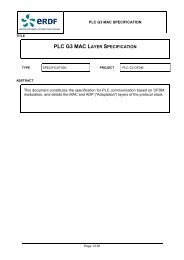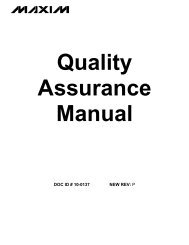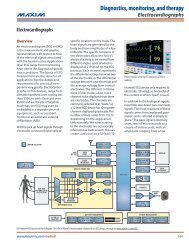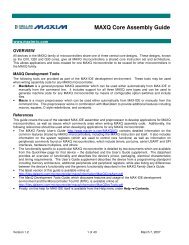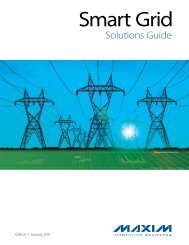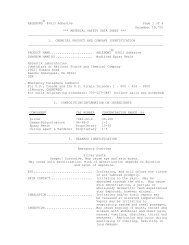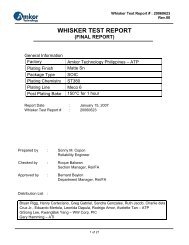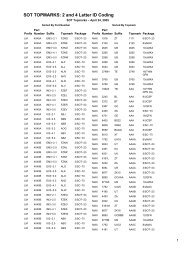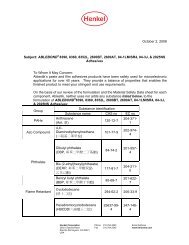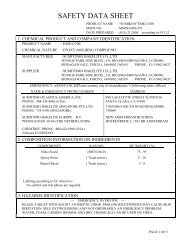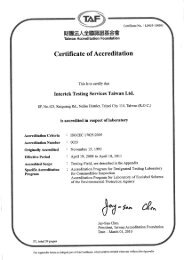MAXIM High-Speed Bipolar and BiCMOS Process Reliability Report
MAXIM High-Speed Bipolar and BiCMOS Process Reliability Report
MAXIM High-Speed Bipolar and BiCMOS Process Reliability Report
Create successful ePaper yourself
Turn your PDF publications into a flip-book with our unique Google optimized e-Paper software.
RR-B3A<br />
Appendix 1: Acceleration Factor Calculation<br />
The thermal acceleration factor represents the temperature enhancement of the failure rate, <strong>and</strong><br />
expresses the ratio of the failure rates at two temperatures. The Arrhenius equation is used to calculate<br />
the acceleration factor, given as A below:<br />
where:<br />
A = exp [ (E a/ k B ) x { (1/T u ) - (1/T s ) } ]<br />
E a = the activation energy in eV<br />
k B = the Boltzmann constant, 8.617 x 10 -5 eV/K<br />
T u = use temperature, in Kelvin<br />
T s = stress test temperature in Kelvin<br />
In using the formula above, we must know the activation energy, Ea, which may be done in one of two<br />
ways.<br />
Use existing activation energy information:<br />
The first method is to use an existing estimate of the activation energy. Activation energies for many<br />
failure mechanisms have been tabulated <strong>and</strong> published in the technical literature. The dominant failure<br />
mechanisms in have activation energies in the range of 0.7eV to 1.2eV. We have chosen 0.8eV for the<br />
purposes of computing the acceleration factors used in this report. Many failure processes have larger<br />
activation energies.<br />
Measure the activation energy.<br />
The second method of determining an activation energy is empirical. The failure rates of two groups of<br />
devices are tested at different temperatures, <strong>and</strong> the ratio A of their failure rates is calculated. An<br />
example is shown below:<br />
Group 1 = 60/1000 failures after 100 hrs. of operation at 150°C.<br />
Group 2 = 15/1000 failures after 100 hrs. of operation at 125°C.<br />
The acceleration factor between these two temperatures is, therefore, A = 60/15 = 4. The activation<br />
energy Ea is given by:<br />
E a = k B x ln[A] / { (1/T u ) - (1/T s ) } = 0.8 eV<br />
where:<br />
Ea = the unknown activation energy<br />
T u = 125°C + 273°C = 398°K<br />
T s = 150°C + 273°C = 423°K<br />
<strong>and</strong> ln is the natural logarithm function. The other terms are as defined above.<br />
Assuming that this activation energy represents the dominant failure mechanism of the device under<br />
consideration, it may then be used to determine the acceleration factor between any two temperatures.<br />
For example, to find out the acceleration factor between 150 °C <strong>and</strong> 70 ºC, substitute T u = 70 °C + 273 °C<br />
= 343 °K <strong>and</strong> T s =150 °C +273 °C = 423 °K. Acceleration Factor = 165.<br />
Page 28 of 30




